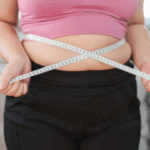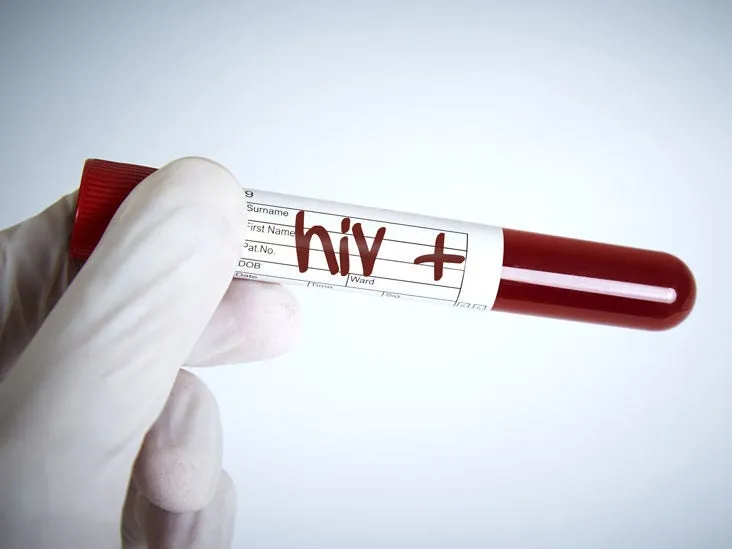Preparing for an upper endoscopy procedure is essential to ensure accurate results and a smooth experience. This minimally invasive test allows doctors to examine the upper gastrointestinal tract, including the esophagus, stomach, and duodenum, using a flexible tube with a camera. Proper preparation involves following specific dietary restrictions, taking prescribed medications, and arranging transportation for after the procedure.
Patients typically need to avoid solid foods for several hours before the endoscopy and may be given bowel prep medications to clear the digestive tract. Stopping certain medications, especially blood thinners, might also be required based on a physician’s advice. These steps help provide a clear view for the doctor, improving diagnostic accuracy and reducing procedure time.
Understanding how to get ready for an upper gastrointestinal endoscopy can reduce anxiety and prevent delays. Clinics like LocalMD in NYC offer detailed guidance to help patients follow preparation instructions effectively, ensuring the endoscopy procedure goes as planned.
Understanding the Upper Endoscopy Procedure
An upper endoscopy is a diagnostic tool used to view the upper digestive tract clearly. It involves a flexible tube with a camera that helps doctors detect issues in the esophagus, stomach, and duodenum. The procedure is minimally invasive and typically done on an outpatient basis.
What Is an Upper Gastrointestinal Endoscopy?
An upper gastrointestinal endoscopy, also known as esophagogastroduodenoscopy (EGD), lets doctors directly visualize parts of the upper GI tract. This includes the esophagus (the swallowing tube), the stomach, and the duodenum (the first segment of the small intestine).
A thin, flexible instrument called an endoscope, equipped with a tiny camera and light, is passed through the mouth and into the digestive tract. This allows for detailed examination of the mucosal lining to identify inflammation, ulcers, tumors, or bleeding.
The procedure provides more comprehensive insight than other imaging methods, such as X-rays, because it shows real-time video and permits biopsy or treatment if needed. It is widely used in gastroenterology practices and offers valuable information about digestive health.
Why You May Need an Upper Endoscopy
Doctors recommend an upper endoscopy when patients show symptoms related to upper gastrointestinal problems. These symptoms may include persistent acid reflux, unexplained stomach pain, difficulty swallowing, or chronic heartburn. It’s also used to investigate anemia caused by potential GI bleeding.
The test can diagnose conditions like esophagitis, gastritis, stomach ulcers, Barrett’s esophagus, or even detect early signs of cancer. It helps to identify the cause of symptoms that imaging tests can miss.
In some cases, the procedure is therapeutic, allowing for polyp removal or dilation of narrowed areas. Proper diagnosis using an upper endoscopy guides effective treatment and management of digestive disorders.
What to Expect During the Procedure
Before the procedure, patients usually fast for 6 to 8 hours to ensure the upper GI tract is clear for optimal viewing. Sedation or anesthesia is administered to minimize discomfort and anxiety.
During the upper endoscopy, the patient lies on their side. The doctor gently inserts the endoscope through the mouth and advances it carefully through the esophagus, stomach, and duodenum. The tiny camera transmits real-time images to a monitor.
The procedure typically lasts 15 to 30 minutes. Doctors may take biopsies or perform minor interventions if abnormalities are found. After completion, patients are monitored briefly while the sedation wears off. Mild throat discomfort or drowsiness is common post-procedure.
Local clinics specializing in gastroenterology, such as those found at LocalMD NYC, provide well-equipped, comfortable settings for upper endoscopies with experienced medical teams.
Essential Preparation Steps Before Your Upper Endoscopy
Preparing thoroughly for an upper endoscopy helps ensure the procedure is safe and effective. Key preparations include working closely with healthcare providers, managing medications, following fasting rules, and organizing transportation and practical needs.
Consulting Your Gastroenterologist and Care Team
Patients should communicate openly with their gastroenterologist about their medical history and current health status well before the procedure. It is important to discuss any allergies, previous reactions to sedation, or existing medical conditions.
The care team will provide specific prep instructions tailored to the individual’s needs. This includes clarifying which medications to stop or continue and setting reasonable expectations for the procedure day. Questions should be asked freely to avoid confusion.
Coordination with the care team helps avoid complications. The gastroenterologist may request additional tests or recommend specific adjustments based on the patient’s overall health. Early consultation is key to a smooth upper GI endoscopy.
Managing Medications and Medical Conditions
Several medications may need to be stopped days before the procedure, including blood thinners like aspirin, clopidogrel, or warfarin. Such changes must be authorized by the doctor to balance the risks of bleeding and clotting.
Non-steroidal anti-inflammatory drugs (NSAIDs) should typically be stopped about five days prior. Iron supplements and bismuth-containing products should be halted about a week before the test.
Patients with chronic conditions like diabetes or heart disease should review their medication schedules with their medical provider. Some medications can be taken with small sips of water up to four hours before the procedure, provided they are approved by the doctor.
Dietary and Fasting Guidelines
Clear liquids only are allowed in the hours leading up to the upper endoscopy. Solid food should be avoided completely after midnight the night before the procedure.
Typically, no food or drink should be consumed for at least eight hours before the exam. This fasting reduces risks from sedation and improves visibility during the test.
Common clear liquids include water, broth, and tea without milk. Patients should avoid antacids, Carafate, or other specific medications on the day of the procedure as instructed by the care team.
Arranging Transportation and Practical Considerations
Because sedation is used during an upper GI endoscopy, patients cannot drive afterward. It is essential to arrange for a responsible adult to drive them home.
Wearing comfortable, loose clothing on the day facilitates easier access for medical staff and patient comfort. The procedure room can be cold, so bringing socks and a light layer is recommended.
Patients should plan to arrive a little earlier than the scheduled procedure time to complete any last-minute paperwork or prep. Following all prep instructions precisely helps prevent delays or cancellations.
Medication and Bowel Preparation Details
Proper management of medications and bowel preparation is essential for a successful upper endoscopy. This includes understanding the types of medications used to clear the gastrointestinal tract, following precise timing and dosage guidelines, recognizing potential risks, and adapting preparation for individuals with specific health conditions.
Types of Bowel Prep Medications
Bowel preparation for an upper endoscopy often involves several types of medications to ensure the digestive tract is clear.
- Laxatives help to remove residual food and mucus from the stomach and upper small intestine.
- Prokinetic agents speed up digestive tract motility, reducing undigested material that can obstruct visibility during the procedure.
- Antacids neutralize stomach acid, improving visualization and reducing the risk of acid-related complications during examination.
Doctors frequently combine these medications based on individual needs to optimize bowel clarity. Patients should follow prescribed medication plans exactly to ensure the highest quality images during the endoscopy.
Timing and Dosage Instructions
Timing and dosage are crucial for bowel prep medications. Patients generally start preparation 1 to 3 days before the procedure, depending on their physician’s guidance.
- Laxatives are usually taken in the evening before and sometimes the morning of the test to ensure thorough cleansing.
- Prokinetic agents may be administered several hours prior to the procedure to promote digestive movement.
- Antacids, if prescribed, are often taken closer to the procedure time to reduce stomach acidity.
It is important to follow the exact schedule provided by the healthcare team. Deviating from these instructions can result in poor visibility, cancelation, or the need to repeat the procedure.
Risks Related to Medications
Stopping or adjusting certain medications is important before an upper endoscopy. Blood thinners, for example, often need to be discontinued temporarily to reduce bleeding risk.
Use of laxatives and prokinetic agents carries potential side effects such as dehydration, abdominal cramps, or electrolyte imbalances. Patients should report any unusual symptoms to their healthcare provider immediately.
Antacids generally have fewer risks but might interfere with other medications if not timed properly. Careful review of all current medications with a gastroenterologist helps minimize risks related to bowel prep and procedure outcomes.
Special Considerations for Diabetes and Other Conditions
Patients with diabetes require special attention during bowel prep. Fasting and bowel cleansing can affect blood sugar levels. Adjustments in insulin or oral diabetes medication may be necessary.
Additional conditions such as kidney disease, heart problems, or allergies to prep medications must be disclosed to the healthcare provider. Patients should inform the clinic during scheduling—such as services available at LocalMD NYC—to receive tailored prep instructions.
Close communication with medical staff ensures safe management of medications and prevents complications during the procedure.
Tips for a Smooth and Comfortable Upper Endoscopy Experience
Preparing effectively and knowing what to expect can make the upper endoscopy procedure more comfortable and less stressful. Attention to what to bring, managing anxiety, understanding side effects, and following proper post-procedure care all contribute to a better experience.
What to Bring and Wear on Procedure Day
Wearing comfortable, loose-fitting clothing is important to ensure ease during the procedure and recovery. Avoid tight belts or jewelry that might interfere with medical equipment.
Bring essential documents such as your identification, insurance card, and any paperwork related to your procedure. It is also helpful to have a list of current medications and allergies ready to share with the care team.
A plastic mouth guard may be provided during the procedure to protect the mouth and teeth. Arrange for transportation home, as sedation or anesthesia will impair your ability to drive safely afterward.
Reducing Anxiety and Staying Informed
Understanding the procedure and preparation steps can reduce anxiety. Patients should review all instructions from their doctor and ask questions about sedation methods, including the type and level of anesthesia that will be used.
Breathing exercises and mindfulness techniques can help calm nerves. Knowing that sedation will keep them comfortable and pain-free during the exam often reassures patients.
Staying informed about what to expect before, during, and after the procedure enables better preparedness and cooperation with the medical team, which can enhance the overall experience.
Expected Side Effects and Immediate Recovery
After sedation, it is common to experience drowsiness, mild throat soreness, or bloating. These symptoms typically resolve within a day without special treatment.
The anesthesia used can impair reflexes and coordination for several hours, so patients must not drive or operate machinery afterward. The care team will monitor recovery and ensure patients are stable before discharge.
Some may notice minor bloating or mild cramping due to air introduced during the exam. Drinking clear fluids and resting can help ease these effects immediately after the procedure.
Post-Procedure Care and When to Seek Help
Rest is essential on the day of the procedure due to lingering sedation effects. Avoid eating solid foods until approved by the doctor, often starting with light, non-irritating foods.
Patients should follow any medication adjustments recommended by their physician. If symptoms such as severe abdominal pain, difficulty swallowing, fever, or vomiting occur, contacting the care team promptly is crucial.
Local clinics, including services like those at LocalMD in NYC, offer accessible follow-up care and advice, which can help address any concerns during recovery.
Frequently Asked Questions
Preparation involves careful attention to eating and medication guidelines, understanding what happens during the procedure, and knowing the conditions it can diagnose. It’s important to follow all instructions closely to ensure clear visibility and accurate results.
What dietary restrictions should I follow before an upper endoscopy?
Patients should avoid solid foods for 6-8 hours before the procedure and may drink clear liquids up to a few hours prior.
Are there any medications I should avoid before undergoing an upper GI endoscopy?
Blood thinners and certain supplements may need to be stopped, based on the doctor’s advice.
What should I expect during the upper endoscopy procedure?
A thin, flexible tube with a camera is gently guided through the mouth to examine the esophagus, stomach, and duodenum.
Is it possible to have an upper endoscopy if I’ve accidentally consumed liquids before the exam?
The procedure is often postponed because liquids can interfere with visibility and increase risk during sedation.
What symptoms or conditions can an upper endoscopy help diagnose?
It helps identify acid reflux, ulcers, inflammation, swallowing difficulties, and early signs of cancers in the upper digestive tract.
Will I be sedated for the duration of the upper endoscopy, and what are the implications?
Sedation is commonly used, requiring patients to arrange transportation and rest after the procedure due to impaired alertness.






